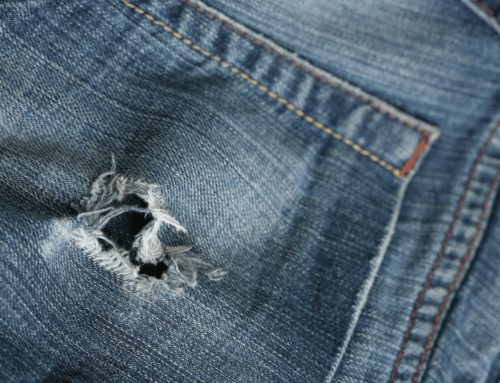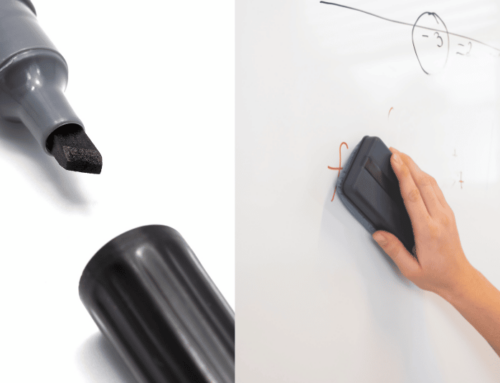How to Remove Hot Glue From Fabric

In this article, you will learn some useful tips on how to remove hot glue from fabric. Whether it’s a crafting mishap or an accidental spill, removing hot glue from fabric can be tricky. However, with the right techniques and a little patience, you’ll be able to effectively get rid of those sticky messes without damaging your fabric. So, if you’re ready to tackle this sticky situation, let’s dive in and discover how to remove hot glue from fabric. Hot glue can be a handy adhesive for crafting and DIY projects, but it can sometimes end up in places you didn’t intend. If you find yourself in a situation where you need to remove hot glue from fabric, don’t worry. There are several methods you can try, depending on the type of fabric and the glue used. In this article, we will explore different techniques for effectively removing hot glue from fabric.
Using Heat to Remove Hot Glue
One method for removing hot glue from fabric is to use heat. Heat can help to soften the glue, making it easier to remove. There are a couple of ways you can use heat to remove hot glue from fabric.
Using an Iron to Remove Hot Glue
To remove hot glue from fabric using an iron, you will need a few supplies:
- An iron
- A clean, dry cloth or paper towel
- A butter knife or similar tool for scraping
Here’s how you can do it:
- Heat the iron to a low setting without steam.
- Place the fabric with the hot glue stain face down on the ironing board.
- Cover the stained area with a cloth or paper towel.
- Gently press the iron onto the cloth, moving it in a circular motion for about 20-30 seconds.
- Lift the iron and check if the glue is softening. If not, repeat the process for another 20-30 seconds.
- Once the glue is softened, use a butter knife or similar tool to scrape off the hot glue gently. Be careful not to damage the fabric.
- If any residue remains, repeat the process until the fabric is clean.
Using a Hairdryer to Remove Hot Glue
If you don’t have an iron, you can use a hairdryer as an alternative method to remove hot glue from fabric. Here’s what you’ll need:
- A hairdryer
- A clean, dry cloth or paper towel
- A butter knife or similar tool for scraping
Follow these steps:
- Set your hairdryer to the highest heat setting.
- Hold the hairdryer about 2-3 inches away from the fabric with the hot glue stain.
- Direct the heat towards the glue stain and move the hairdryer in a circular motion for about 30-60 seconds.
- Once the glue starts to soften, use a butter knife or similar tool to gently scrape off the hot glue. Be cautious not to damage the fabric.
- If any residue remains, repeat the process until the fabric is clean.
Using Solvents to Remove Hot Glue
Another effective method for removing hot glue from fabric is to use solvents. Solvents can help dissolve the glue, making it easier to remove. Here are two common solvents you can try:
Using Acetone to Remove Hot Glue
Acetone is a strong solvent that can effectively dissolve hot glue. However, it’s essential to note that acetone is not suitable for all types of fabric, especially delicate fabrics like silk or satin. Before using acetone, perform a patch test in an inconspicuous area of the fabric to ensure it won’t cause any damage. Here’s how to use acetone to remove hot glue:
- Moisten a cotton ball or cotton swab with acetone.
- Gently dab the cotton ball or swab onto the hot glue stain.
- Let the acetone sit on the glue for a few minutes to allow it to dissolve.
- Use a butter knife or similar tool to scrape off the dissolved hot glue gently.
- If any residue remains, repeat the process until the fabric is clean.
- Afterward, wash the fabric according to the care instructions to remove any lingering acetone.
Using Rubbing Alcohol to Remove Hot Glue
If acetone is not suitable for your fabric, rubbing alcohol can be an alternative solvent to remove hot glue. Rubbing alcohol is generally safe to use on most fabrics, but it’s still a good idea to perform a patch test first. Follow these steps to use rubbing alcohol:
- Moisten a cotton ball or cotton swab with rubbing alcohol.
- Dab the cotton ball or swab onto the hot glue stain.
- Allow the rubbing alcohol to sit on the glue for a few minutes to dissolve it.
- Gently scrape off the dissolved glue using a butter knife or similar tool.
- If any residue remains, repeat the process until the fabric is clean.
- Wash the fabric according to the care instructions to remove any residual rubbing alcohol.
Using Freezing to Remove Hot Glue
If you prefer a non-chemical method, you can try using freezing to remove hot glue from fabric. Freezing the fabric can harden the glue, making it easier to scrape off. Here are two freezing methods you can try:
Putting Fabric in the Freezer to Remove Hot Glue
This method is suitable for small fabric items or patches. Here’s how:
- Place the fabric with the hot glue stain in a sealable plastic bag.
- Seal the bag tightly, making sure there are no openings.
- Put the bag in the freezer and leave it for a few hours or overnight.
- Once the glue is frozen, remove the bag from the freezer.
- Gently flex the fabric to loosen the frozen glue.
- Use a butter knife or similar tool to scrape off the frozen glue gently.
- If any residue remains, repeat the process until the fabric is clean.
- Wash the fabric according to the care instructions to restore its appearance.
Using Ice Cubes to Remove Hot Glue
This method works best for larger fabric items or furniture. Follow these steps:
- Fill a plastic bag with ice cubes.
- Place the bag of ice cubes on top of the hot glue stain.
- Allow the ice cubes to sit on the glue for about 15-30 minutes to freeze it.
- Once the glue is frozen, remove the bag of ice cubes.
- Gently scrape off the frozen glue using a butter knife or similar tool.
- If any residue remains, repeat the process until the fabric is clean.
- Clean the fabric according to the care instructions to remove any water residue.
Precautions to Consider
Before attempting any of the methods mentioned above, it’s crucial to take some precautions to avoid any damage to the fabric or harm to yourself. Here are a couple of precautions you should consider:
Perform a Patch Test First
Before using any solvents or heat on the fabric, it’s essential to perform a patch test in an inconspicuous area. Apply a small amount of the solvent or heat to a corner or seam of the fabric and check for any adverse reactions like discoloration, fading, or fabric damage. If there are no negative effects, it should be safe to proceed.
Use Protective Gloves and Goggles
When using solvents like acetone or rubbing alcohol, it’s essential to protect yourself by wearing protective gloves and goggles. Solvents can be harsh on the skin and eyes, so it’s crucial to take precautions to avoid any accidental contact.
Alternative Methods for Removing Hot Glue from Fabric
If the methods mentioned above don’t work for you, there are a couple of alternative methods you can try:
Using a Hot Glue Gun to Reactivate and Remove Glue
If you still have a hot glue gun handy, you can use it to reactivate the hot glue and remove it. Here’s what you can do:
- Heat up your hot glue gun and wait for it to reach its operating temperature.
- Apply a thin layer of fresh hot glue onto the existing hot glue stain.
- Quickly press a clean cloth or paper towel onto the fresh hot glue and hold it firmly for a few seconds.
- Carefully peel off the cloth or paper towel, along with the reactivated hot glue. The old glue should stick to the cloth or paper towel.
- If any residue remains, repeat the process with a clean cloth or paper towel until the fabric is clean.
Using Vinegar or Lemon Juice to Dissolve Hot Glue
If you prefer natural options, you can try using vinegar or lemon juice to dissolve hot glue. Here’s what you can do:
- Moisten a cloth or sponge with vinegar or lemon juice.
- Gently dab the cloth or sponge onto the hot glue stain.
- Allow the vinegar or lemon juice to sit on the glue for a few minutes to dissolve it.
- Use a butter knife or similar tool to scrape off the dissolved glue gently.
- If any residue remains, repeat the process until the fabric is clean.
- Wash the fabric according to the care instructions to remove any lingering vinegar or lemon juice.
Tips for Removing Hot Glue Residue
After removing the hot glue, you may still have some residue left behind. Here are a couple of tips to help you remove hot glue residue effectively:
Scraping off Excess Glue
Before using any solvents or heat, scrape off as much excess hot glue as possible using a butter knife or similar tool. This will make the subsequent removal process easier.
Using a Toothbrush or Cotton Swab to Remove Residue
For small or intricate areas, you can use a toothbrush or cotton swab dipped in warm soapy water to gently scrub away any remaining hot glue residue. Rinse the fabric with clean water afterward to remove any soap residue.
How to Clean Fabric After Removing Hot Glue
Once you have successfully removed the hot glue from your fabric, it’s important to properly clean the fabric to restore its appearance. Here’s what you can do:
Washing Fabric with Mild Detergent
Check the care instructions on the fabric and wash it accordingly. Use a mild detergent suitable for the fabric type and wash it in cold water. Avoid using hot water, as it can set any remaining glue stains.
Treating any Stains or Discoloration
If there are still stains or discoloration on the fabric after washing, you can try treating them with a stain remover or spot cleaner suitable for the fabric type. Follow the instructions on the product and test it on a small, inconspicuous area first.
Common Mistakes to Avoid
When removing hot glue from fabric, there are a couple of common mistakes you should avoid:
Using Excessive Force to Remove Hot Glue
It’s important to be gentle when removing hot glue from fabric. Using excessive force can damage the fabric fibers or stretch the fabric, making it more challenging to remove the glue effectively.
Using Harsh Chemicals That May Damage the Fabric
Ensure you choose solvents or cleaners that are safe for the fabric. Harsh chemicals can cause color fading, discoloration, or weaken the fabric fibers, leading to irreversible damage.
Conclusion
Removing hot glue from fabric can be a tricky task, but with the right methods and precautions, it can be done effectively. Remember to choose a method that suits the type of fabric and glue used, and always perform a patch test before applying any solvents or heat to the fabric. Take your time and be gentle when removing the glue to avoid damaging the fabric. Afterward, clean the fabric according to the care instructions to restore its appearance. With these tips and techniques, you’ll be able to remove hot glue and enjoy your fabric once again.


